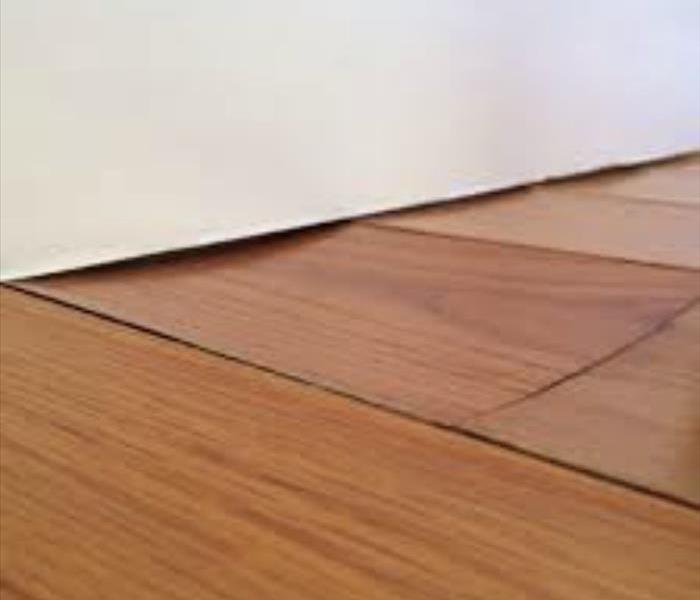What to do When There’s Water Damage to Wood Flooring
8/9/2019 (Permalink)
 Water Damage can cause cupping to your wood floors, especially if not taken care of quickly and appropriately.
Water Damage can cause cupping to your wood floors, especially if not taken care of quickly and appropriately.
Flooding can damage wood floors quickly. This is because wood floors have several permeable access points: between seams, breaks in top coating, under baseboards, and through heating registers.
When wood gets wet it swells and cupping can set in. Cupping is easy to spot: the sides of the boards will bow above the center. In many cases, cupping is a sign that flooring will require replacement. The goal though is to try and get to the problem before it can cause cupping or other damage to your flooring.
As much water as possible needs to removed as quickly as possible. This is where we at SERVPRO of Burlington come in. With our state of the art equipment we get up excess water, then dry the room and your flooring in an attempt to hopefully save your wood floors.
Depending on the size of the area and what’s available to you at home, towels, mops, and squeegees may be helpful to try and eliminate some water on your own. However, if the water source is unknown or the result of a sewage backup, do not attempt to remove the water on your own. Flood waters may contain dangerous pathogens, bacteria, and organic matter. Instead, call us at SERVPRO of Burlington to ensure a safe and thorough cleanup.
If you are able to entirely remove the water on your own, and want to try and mitigate the problem on your own, then the next step would be to vigorously scrub the same areas with a dry brush or broom to loosen any dirt or debris that remains. Next you’d want to clean and sanitize your floors before you can begin to dry them.
When cleaning your floors, make sure to avoid all soap-based (sudsy) cleaners, wax, or steam cleaners to disinfect your hardwood floors. Mix your preferred detergent according to package directions. Wash the floor in sections to avoid further water damage. Apply the detergent mixture to all affected areas. Remove any residual water as you go.
Even after all standing water has been removed, there’s still plenty of moisture left to cause damage. You’ll need a professional-grade dehumidifier to begin the drying process—a personal use dehumidifier will not suffice. You’ll have to call around to rent one or call in SERVPRO of Burlington. You may need more than one dehumidifier depending on the size of the space and the damage to it. They’ll need to be left on and running undisturbed for at least 24 hours.
Along with dehumidifiers, you can arrange several large fans to encourage more air flow. Direct the fans toward the floor and move them around as needed. If you have central AC, turn that on as well. Depending on the weather outside, open the windows. Don’t forget though that that the purpose of this step is to dehumidify. So, if humidity is high outside, open windows just a few inches. The drying process can take weeks, depending on several factors. The only way to know it’s completely dry is to buy a moisture meter and test the affected areas.
If you’re unable to successfully mitigate water damage on hardwood floors, you may need professional assistance in removing damaged flooring, mitigating mold and mildew, and restoring your property to like-new condition.
At SERVPRO of Burlington we make it “Like it never happened." Call us 24 hours a day, seven days a week at 336-379-1772 for immediate relief and emergency water damage services.






 24/7 Emergency Service
24/7 Emergency Service